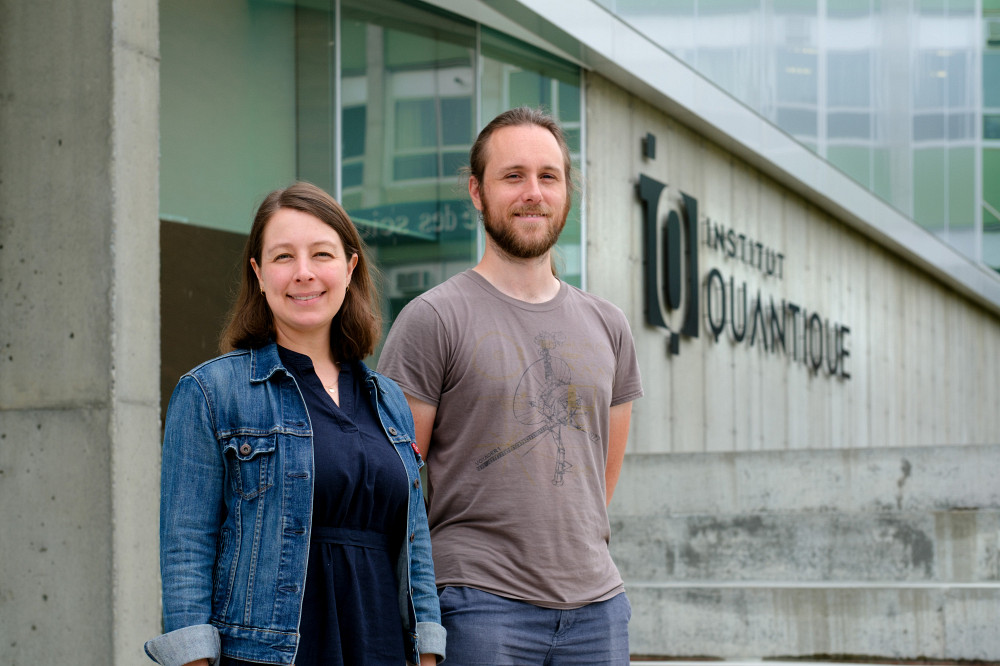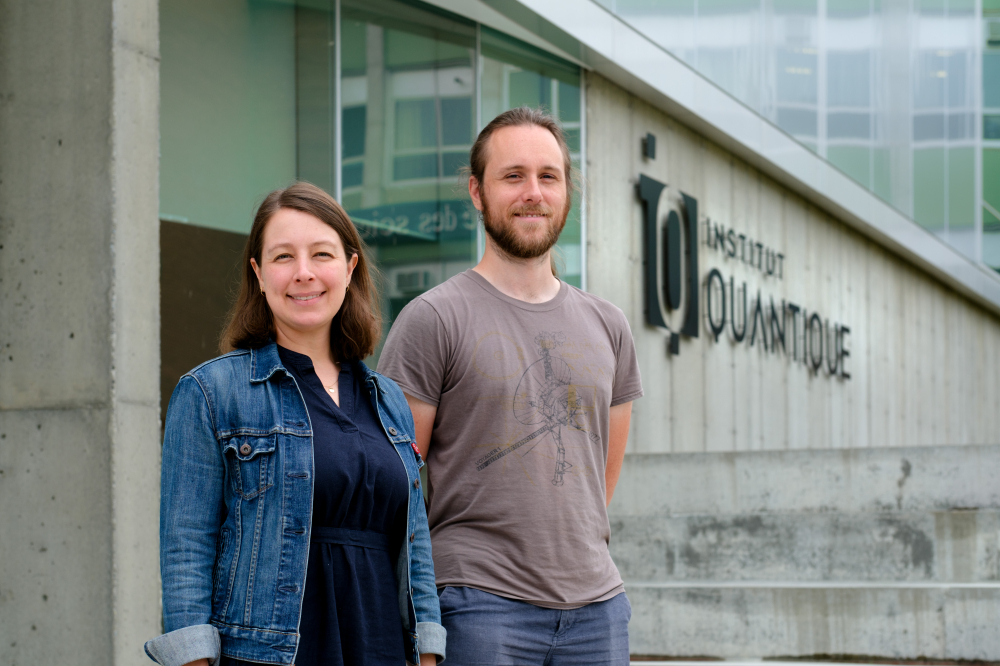
Photo: Michel Caron – UdeS
Financial markets are an integral part of the modern economy and our society. There are several approaches to estimating the fluctuating value of market prices, and the ones that work well mostly reflect these very complex markets. A quantum computer offers new tools that could ultimately change the situation.
From 2022, a research project bringing together the UdeS School of Management, the AlgoLab of the Quantum Institute (IQ) and the Financial Markets Authority (AMF) from Quebec is exploring the potential of quantum computing to develop tools that could, among other things, reduce the calculation time of indicators useful for management the risk of insurance products linked to financial markets or the assessment of the price of certain financial products, such as options.
Options and price estimates
Options are contracts that give investors the right to buy or sell an underlying asset at a predetermined fixed price within a specified time frame. Options play a key role in financial markets, allowing investors to minimize some of their risks, speculate on price movements or even manage portfolios more efficiently.
Obviously, the level of complexity of the valuation calculation increases significantly when considering an option with multiple underlying assets and their fluctuations over time. Financial institutions and the academic community are increasingly looking to quantum computing to improve this type of calculation and potentially speed up stock trading.
“In summary, prices are a mathematical expectation, which is essentially an integral part of a probability distribution function. There are quantum algorithms that, theoretically, can calculate this quickly,” explains Anne MacKay, a professor in the Department of Mathematics and the initiator of this research project together with her colleague, Professor Alain Bélanger. She says that she is particularly interested in the paradigm shift in finance offered by certain calculation methods in quantum computing.
Physics and finance, an unlikely pair
If the union of the two fields seems improbable, finance and physics have been working side by side for several decades. “We often talk about the Black-Scholes model, they were the first to bring advanced mathematics to solve this in the 1970s by writing down the dynamics of the price of derivatives in the form of a heat equation, which is a tool of physics, underscores PD MacKay. Since then, the models have multiplied and become very sophisticated to better represent prices in the market. On the other hand, mathematically, it is increasingly difficult to calculate with a (conventional) computer. »
There are several classic approaches to option pricing. Therefore, Monte Carlo simulations are used to model complex systems (such as financial derivatives) with several variables through random sampling. “Monte Carlo simulations are slow and not necessarily very efficient,” continues PD MacKay. But their great advantage is that they are flexible, simple and versatile. This is why they are so common in finance. I believe there are other approaches, especially with quantum algorithms. »
Two quantum tools
Alexandre Foley, a quantum computing developer at AlgoLab, also sees this project as an opportunity to apply theoretical methods in a practical way: “There is a good match between this type of prediction problem and the capacity of a quantum computer to produce probability distributions. There is a way to translate the problems into the form of quantum mechanics. Once this is done, we can in principle solve them with a quantum computer. »
Thanks to Alexandre’s work, the project has implemented two price estimation tools in a quantum computer. One of these methods allows you to estimate a weighted average by measuring the probability of a single qubit. The second method deals with the preparation of probability distributions in a quantum computer. This takes advantage of tensor networks to construct an intermediate representation that is easily transformed into a quantum circuit. At this point, both of these approaches work for a single variable.
Start today to better understand tomorrow
For the Financial Markets Authority (AMF), this research project is an opportunity to stay abreast of discoveries that could affect the world of finance: “Quantum computers are very likely to generate changes in the financial sector, especially in terms of IT security, calculation algorithms that they use in risk management and development of artificial intelligence models, points out Emmanuel Hamel, data scientist at AMF. The Agency’s participation in this work provides an opportunity to deepen the understanding of quantum computers and to better assess the effects of their use, both for participants in the financial sector and for users of financial products and services. »
The first part of this project aimed to apply certain methods from the literature, especially two calculation tools developed by AlgoLab. The team will now focus on the temporal aspect of state evolution to be able to introduce, for example, specific time intervals. In the near future, technical advances may also enable the integration of more variables into a quantum circuit, thus making the estimation tool much more capable of solving practical problems in finance and actuarial science.
“One of the aspirations is to bring these tools together in a format that is easy to use by people who are not experts in quantum computing,” explains Alexandre. We want it to be useful, and for that people need to be able to describe their problem, and the software needs to be able to translate that into a format that can be processed by a quantum computer to produce a result that they can understand and change.error. »
Quantum computing could be applied in a hybrid way for specific aspects of the problem in combination with classical approaches: “In general, that’s what we’re trying to do, that is to use a quantum computer for the part where it will be most efficient. It’s a new tool, similar to machine learning ten years ago It’s good to position yourself from the beginning, because it will grow,” adds PD MacKay.
For her, the scientific value of the project is obvious: “I think that with the help of AlgoLab programmers, we will be able to contribute to the improvement of algorithms and literature in the application of quantum computing in finance.” For me, contributing to research and advancing knowledge is more than enough, and that’s what I want to do. »

